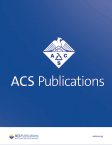ChatGPT-powered deep learning: elevating brain tumor detection in MRI scans
IF 3.4
Q2 PUBLIC, ENVIRONMENTAL & OCCUPATIONAL HEALTH
引用次数: 0
Abstract
PurposeAccurate diagnosis of brain tumors is crucial for effective treatment and improved patient outcomes. Magnetic resonance imaging (MRI) is a common method for detecting brain malignancies, but interpreting MRI data can be challenging and time-consuming for healthcare professionals.Design/methodology/approachAn innovative method is presented that combines deep learning (DL) models with natural language processing (NLP) from ChatGPT to enhance the accuracy of brain tumor detection in MRI scans. The method generates textual descriptions of brain tumor regions, providing clinicians with valuable insights into tumor characteristics for informed decision-making and personalized treatment planning.FindingsThe evaluation of this approach demonstrates promising outcomes, achieving a notable Dice coefficient score of 0.93 for tumor segmentation, outperforming current state-of-the-art methods. Human validation of the generated descriptions confirms their precision and conciseness.Research limitations/implicationsWhile the method showcased advancements in accuracy and understandability, ongoing research is essential for refining the model and addressing limitations in segmenting smaller or atypical tumors.Originality/valueThese results emphasized the potential of this innovative method in advancing neuroimaging practices and contributing to the effective detection and management of brain tumors.由 ChatGPT 驱动的深度学习:提升核磁共振成像扫描中的脑肿瘤检测能力
目的 脑肿瘤的准确诊断对于有效治疗和改善患者预后至关重要。磁共振成像(MRI)是检测脑部恶性肿瘤的常用方法,但对于医护人员来说,解读磁共振成像数据是一项具有挑战性的工作,而且非常耗时。本文介绍了一种创新方法,该方法将深度学习(DL)模型与来自 ChatGPT 的自然语言处理(NLP)相结合,以提高磁共振成像扫描中脑肿瘤检测的准确性。该方法可生成脑肿瘤区域的文本描述,为临床医生提供有关肿瘤特征的宝贵见解,以便做出明智的决策和制定个性化治疗计划。研究结果该方法的评估结果很有希望,在肿瘤分割方面取得了显著的 Dice 系数分数 0.93,优于目前最先进的方法。研究限制/意义虽然该方法在准确性和可理解性方面取得了进步,但持续的研究对于完善模型和解决分割较小或不典型肿瘤的局限性至关重要。
本文章由计算机程序翻译,如有差异,请以英文原文为准。
求助全文
约1分钟内获得全文
求助全文
来源期刊

ACS Chemical Health & Safety
PUBLIC, ENVIRONMENTAL & OCCUPATIONAL HEALTH-
CiteScore
3.10
自引率
20.00%
发文量
63
期刊介绍:
The Journal of Chemical Health and Safety focuses on news, information, and ideas relating to issues and advances in chemical health and safety. The Journal of Chemical Health and Safety covers up-to-the minute, in-depth views of safety issues ranging from OSHA and EPA regulations to the safe handling of hazardous waste, from the latest innovations in effective chemical hygiene practices to the courts'' most recent rulings on safety-related lawsuits. The Journal of Chemical Health and Safety presents real-world information that health, safety and environmental professionals and others responsible for the safety of their workplaces can put to use right away, identifying potential and developing safety concerns before they do real harm.
 求助内容:
求助内容: 应助结果提醒方式:
应助结果提醒方式:


